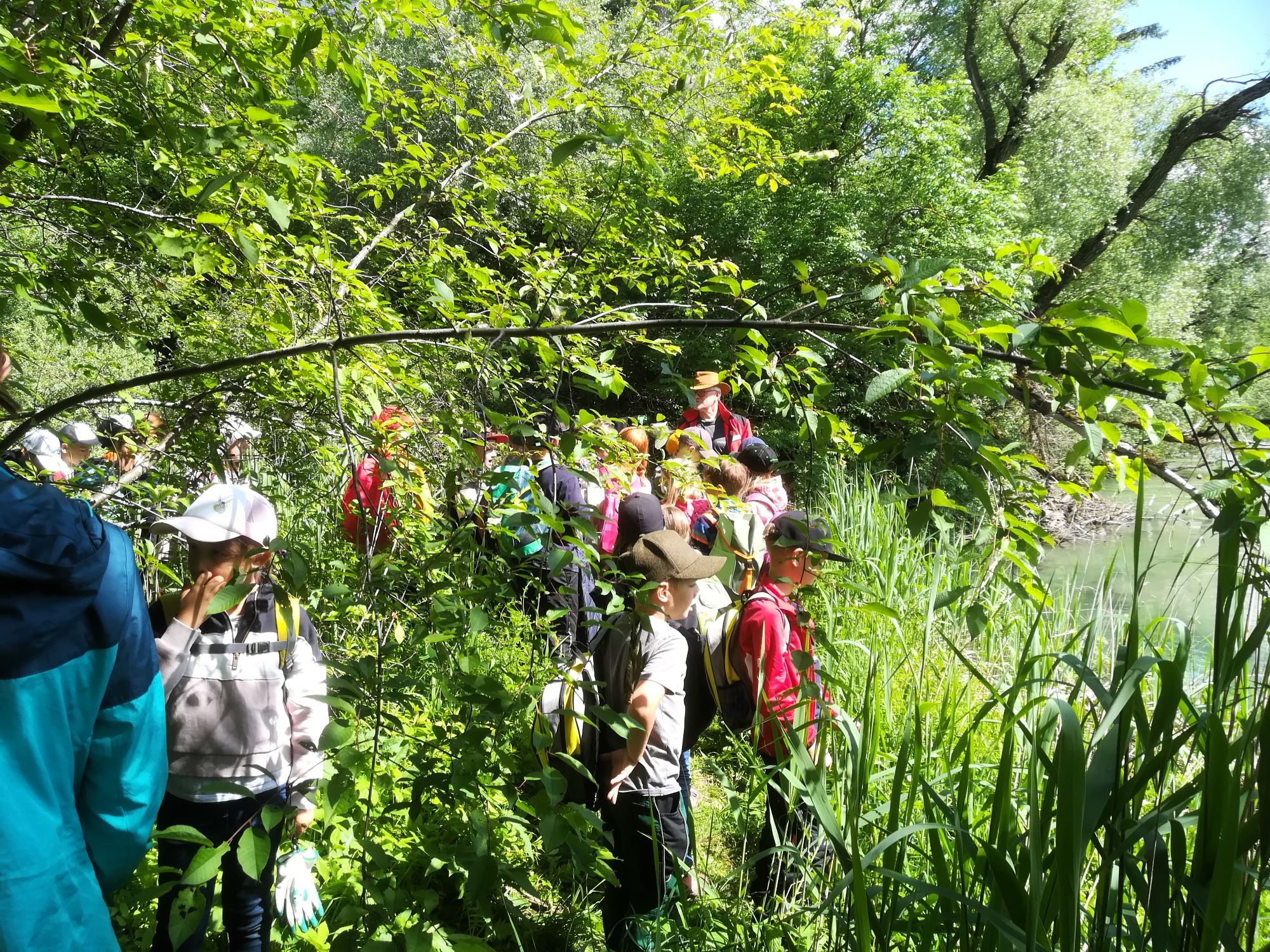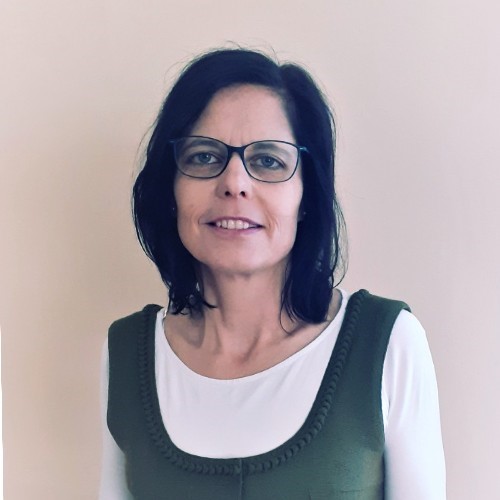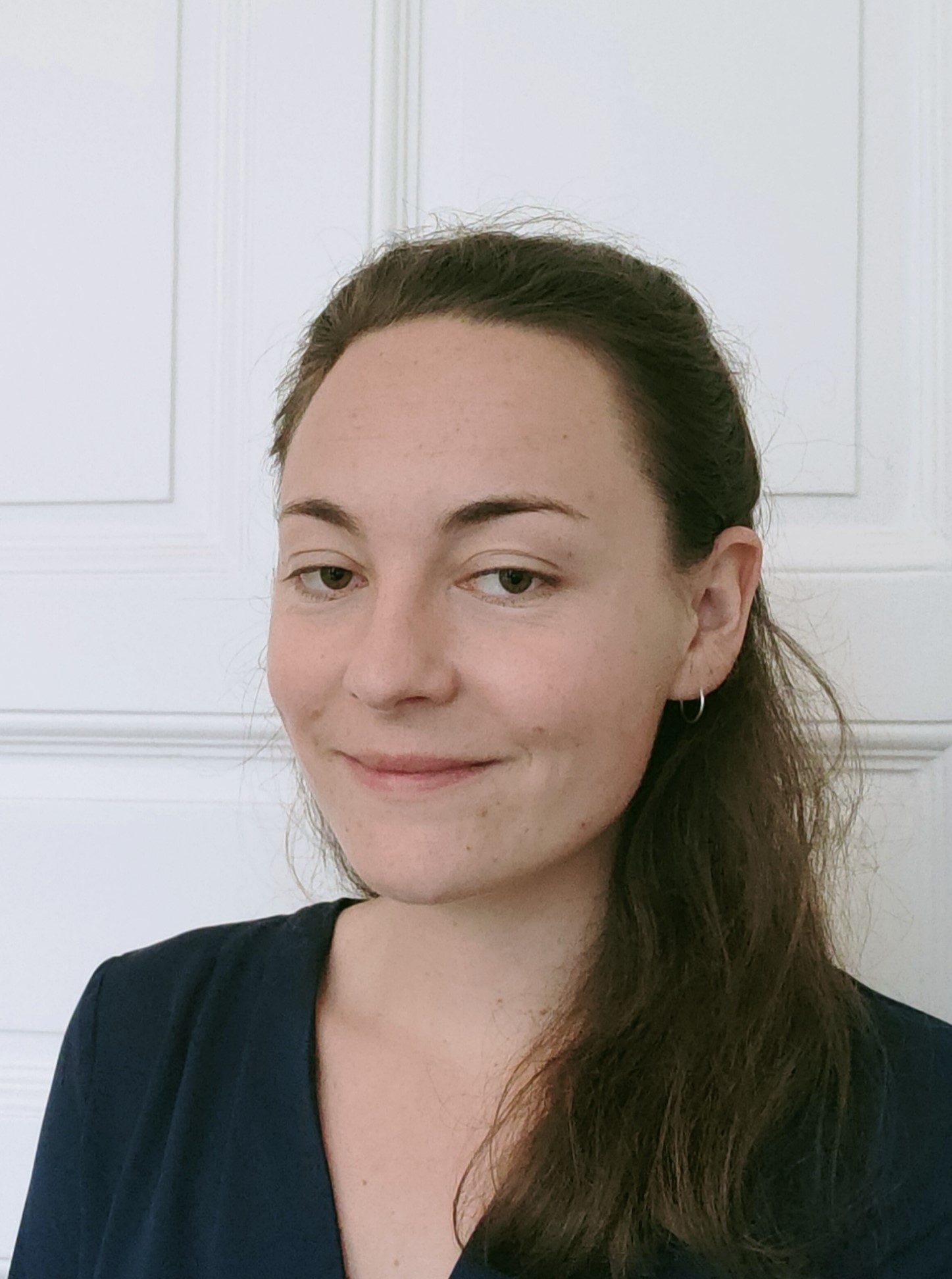DI Renate Mayer from the Research Acquisition Department at the HBLFA Raumberg-Gumpenstein first explained the world of invasive neophytes, their origin, their growth behavior and the benefits and harms of the plant species. Japanese knotweed and glandular balsam were removed . locations along the Enns and its feeder ditches, in wetlands and remnants of alluvial forest in Stainach and St. Martin am Grimming were selected.
A total of over two kilometers of streams and 500 square meters of alluvial forest area were processed by the glandular balsam in good time before seed formation. An area of 500 square meters of knotweed at the entrance to Stainach was cleaned, including root parts. Not a single native plant species could be discovered under the knotweed wall.
The students separated the herbaceous material from the rootstocks and packed them in a total of 80 garbage bags with a total weight of around one ton. The municipality delivers the material to the waste management association in Liezen, which is responsible for the proper disposal in suitable incineration plants. The accompanying teachers participated intensively in the measures and integrated the topic into the lessons (e.g. mathematics, biology, geography).
The plant populations already formed monocultures and were created by the dumping of landfill material or the introduction of contaminated soil onto the area (excavation work). As an annual plant, the glandular balsam can be composted before it produces seeds. The Japanese knotweed must be packed in tight garbage bags and is disposed of properly by the waste management association.
The communities of Irdning-Donnerbachtal, Stainach-Pürgg and St. Martin am Grimming supported the Science Days and are helping to remove the plant material. The areas will continue to be monitored, invasive species will be removed in a timely manner and the recolonization of native plant species on these temporary fallow areas will be documented in detail.
The aim of these Science Days is to sensitize and raise awareness on the subject of invasive plants: recognizing species and their distribution patterns, preventing their spread, quickly containing sources of spread with the right measures, appropriate movement, mindfulness of sensitive locations such as waterside strips, protected areas, wet meadows and gardens. At the same time, the aim is to show that native plant species can spread again if appropriate measures are implemented.
The Science Days are organized and implemented every year in the summer semester by the HBLFA Raumberg-Gumpenstein in collaboration with the regional cooperation partners.


































